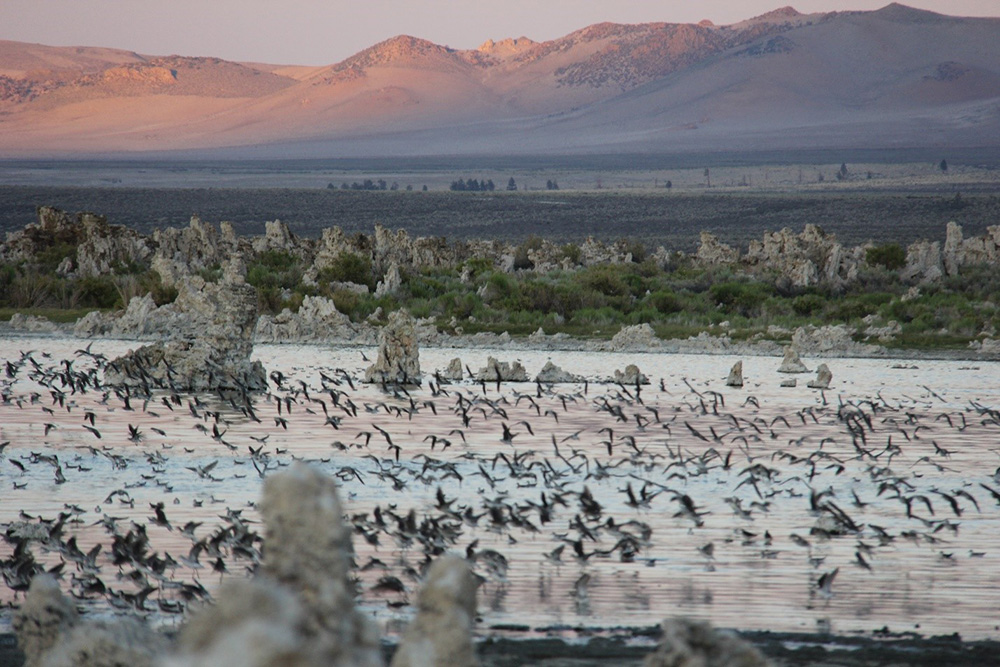
This post was written by Jenny Rieke, 2017 Birding Intern.
As the summer season comes to a close, I thought I’d take some time to reflect on my time at Mono Lake, and the incredible birds I’ve seen along the way.
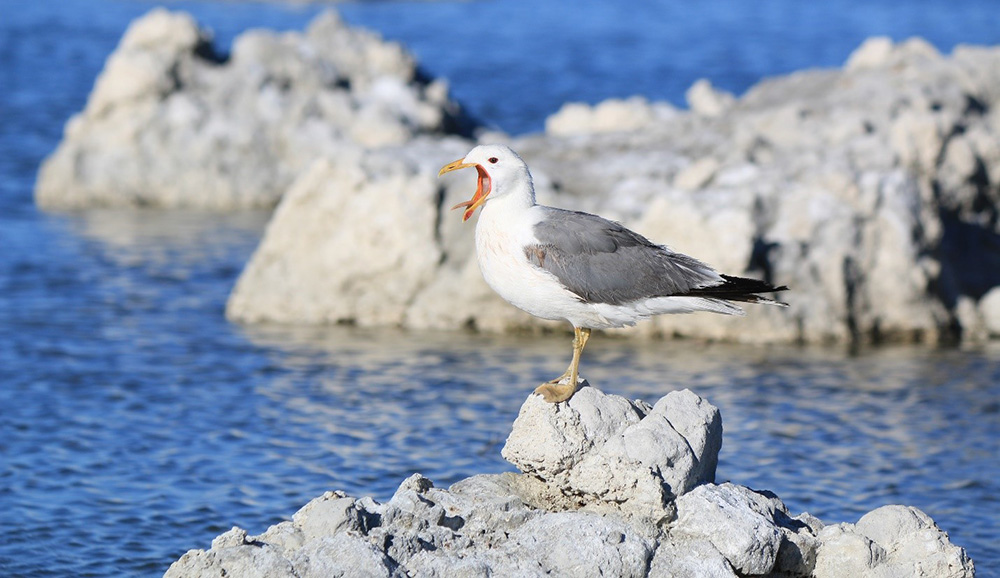
My summer internship began with the sixteenth annual Mono Basin Bird Chautauqua, an event that brings birders together to enhance appreciation and understanding of the Mono Basin’s incredible bird life. The event includes a variety of field trips, workshops, and presentations with renowned bird guides, naturalists, and artists. This year we had 306 participants, 56 presenters, and 152 species of birds reported—a record high for the Chautauqua! Flocks of birders found several rarities, including a Long-tailed Jaeger, an Indigo Bunting, a Chestnut-sided Warbler, and a Yellow-breasted Chat. I got to lead a field trip for the Chautauqua this year—Birding the Inyo Craters. It was a great experience, and a fun way to kick off the summer!
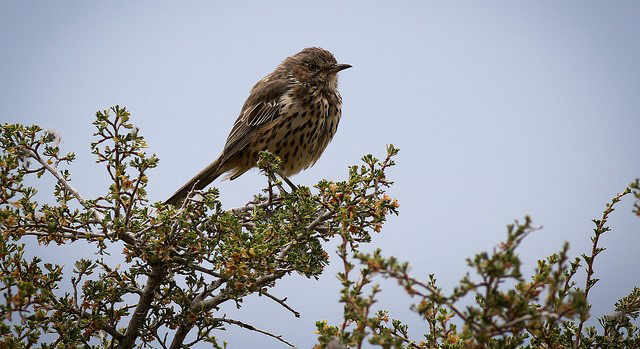
As the Birding Intern, I also got to lead the weekly bird walks at County Park on Friday mornings, which were a highlight of my summer. I always looked forward to waking up early and being outside, enjoying what I love and sharing my passion with others. County Park provides a unique habitat for birds in the dry Great Basin desert. From cavity nesters to tufa-resters, there is always something interesting to find near the lake. Some notable birds of the season were Pinyon Jays, Black-crowned Night Herons, Northern Harriers, a family of kestrels, and heaps of Lazuli Buntings.
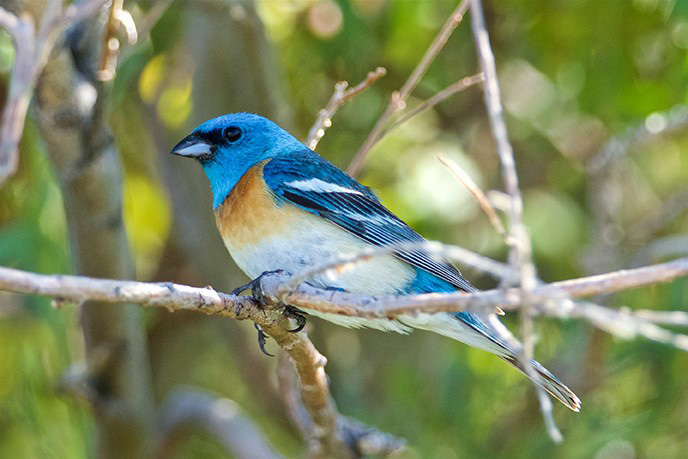
One of my other favorite activities I got to lead were canoe tours. This summer was my first time ever canoeing and now I love it! Being able to share a boat with other people, and watch their reactions as we paddle over active freshwater springs, through groves of tufa, and alongside nesting Osprey never got old, and always made me remember how lucky I am to live here. I loved seeing the Osprey breed throughout the summer, from females sitting on eggs to juveniles fledging and learning to fly. We had 11 nesting pairs of Osprey at Mono Lake this year, and most nests yielded two nestlings—that’s 22 new Osprey hatched at Mono Lake this year.
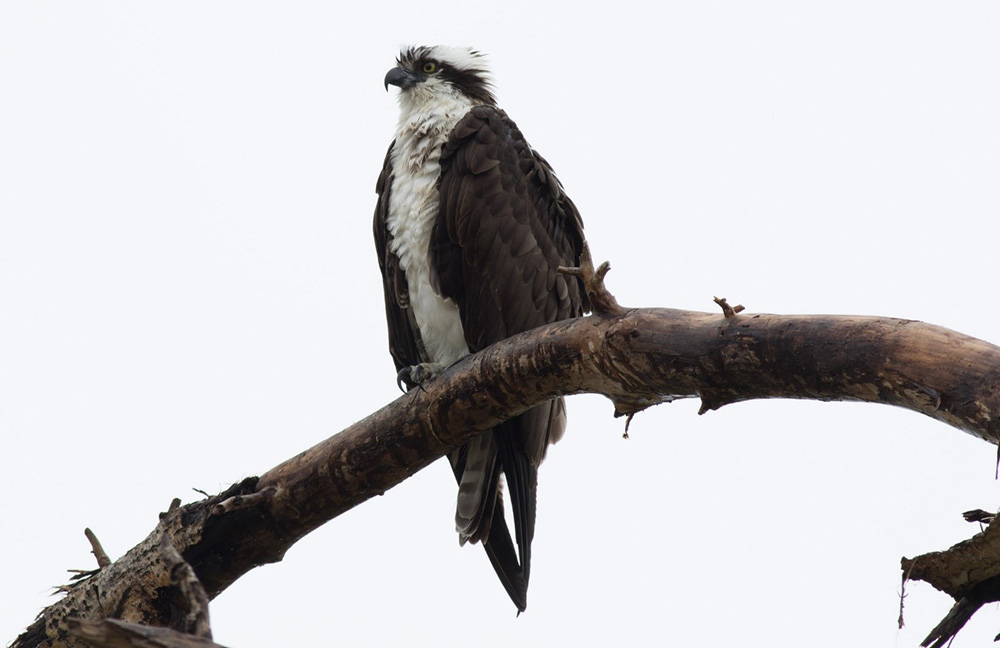
Because Lundy Canyon is one of my favorite places to go birding and hiking, I started a new Lundy Canyon bird walk this year, which took place on Saturday mornings. Lundy Canyon is a great place to find a host of interesting birds, from American Dippers to Bald Eagles. We found several nests, including Calliope Hummingbird, Western Wood-pewee, and beautiful Bullock’s Oriole nests woven with fishing line. My final bird of the season was a Northern Pygmy-Owl that we spotted near the Lundy Lake Resort, which was a treat to see!
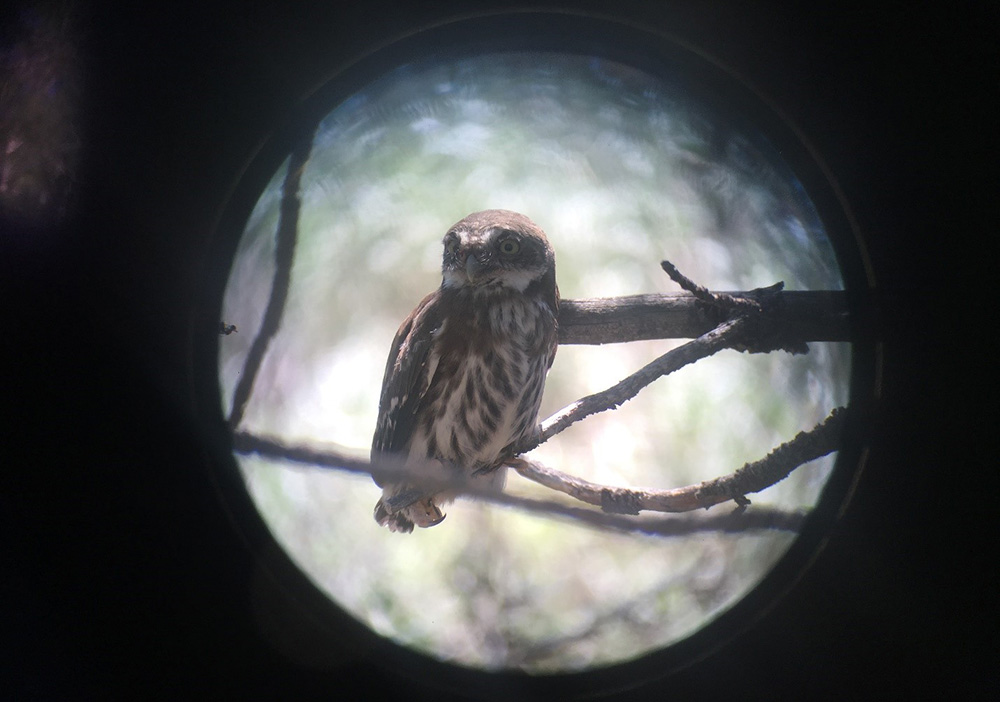
Spending the summer working for the Mono Lake Committee and living in the Eastern Sierra has been an incredible and invaluable learning experience. This summer has inspired me to follow my passion to pursue a graduate degree where I hope to study how downstream riparian ecosystems are affected by altered flow dynamics due to dams and the removal of dams, using songbird species diversity as an indicator of overall riparian health. Wherever I migrate to next, I’ll carry with me all the birds, wildflowers, waterfalls, canyons, and snowmelt-filled streams that make this place so special, and who knows, maybe I’ll be back next summer!
